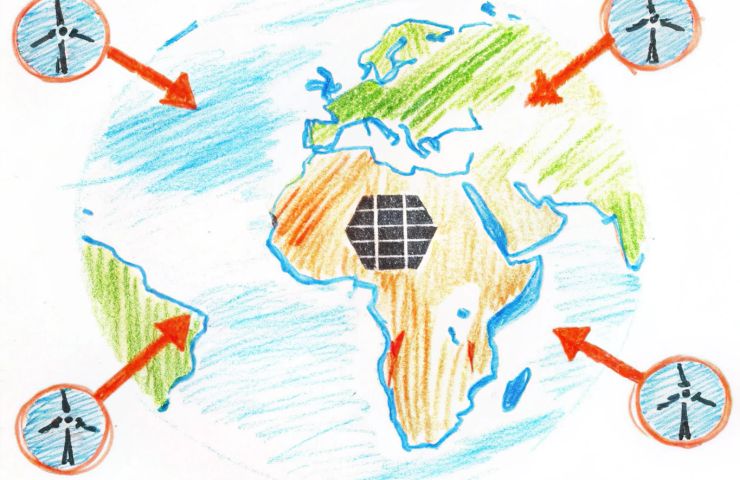
Green Hydrogen Revolution: How the Global South Powers the Energy Transition
August 14, 2025Imagine swapping oil rigs for sun-soaked solar farms and coastal wind parks. A new IRENA analysis suggests the Global South could be exporting a colossal 53 million tonnes of green hydrogen derivatives—ammonia, e-methanol and direct reduced iron (DRI)—by 2050. That’s a total game-changer for the Hydrogen trade!
What This Means
Let’s face it: heavy industry has been stuck on carbon-heavy fuels for decades. Enter green hydrogen, which cracks water with renewable energy to give you a pure, zero-emission feedstock. This can power steel mills, refineries and chemical plants. IRENA’s report shows this switch can:
- Decarbonize tough sectors like steelmaking, ammonia production and shipping.
- Create exports, turning Latin America, Sub-Saharan Africa and North Africa into hubs of Green industrialization.
- Drive jobs & GDP with fresh renewable projects and downstream value chains.
- Boost energy security by swapping volatile fossil fuel imports for stable, local renewable exports.
Plus, big demand centers in Europe and Asia lock in clean, reliable supplies. It’s a win-win for the Renewable energy transition.
The Technology: The Magic Ingredient
So how does it actually work? It starts with green hydrogen via electrolysis: an electrolyser (PEM or alkaline) powered by solar or wind. The only by-products? H₂ and O₂—no CO₂ in sight. Shipping pure hydrogen gas is tricky, so we convert it into handy derivatives:
- Ammonia (NH₃): Green H₂ combined with nitrogen via Haber–Bosch—simple to ship and already traded globally.
- E-methanol: Made from green H₂ and captured CO₂, fitting right into marine fuel and chemical chains.
- Direct Reduced Iron (DRI): Replaces coke with green hydrogen in ironmaking, slashing emissions in one step.
These forms are stable, energy-dense, and slot into existing ports, pipelines and terminals. Scaling up calls for tripling renewable capacity and electrolyser output—a big lift, but the path is clear.
Strategic Angle
What’s driving this revolution?
- Policy momentum: Over 50 national hydrogen strategies—many in the Global South—are lining up incentives, grid upgrades and export corridors.
- Regional strengths: Latin America’s deserts, Sub-Saharan Africa’s vast lands and North Africa’s proximity to Europe make unbeatable green hydrogen hubs.
- Partnerships: The EU is locking in import deals while intergovernmental bodies harmonize regulations and shipping standards.
- Financing: Around USD 2.49 trillion in infrastructure investments—renewables, electrolysers, storage and export facilities—will be needed by 2050.
Securing competitive financing is key to keeping capital costs low in emerging economies; otherwise, we risk sidelining the very regions we aim to empower.
Zooming Out
Under IRENA’s 1.5 °C scenario, global hydrogen demand could leap from 87 Mt in 2020 to a staggering 613 Mt by 2050. Meeting that requires massive build-outs in power generation, electrolyser manufacturing and storage. But here’s the real kicker: up to 53 million tonnes of green hydrogen derivatives could crisscross oceans annually, swapping out oil tankers and coal ships for ammonia and methanol carriers. This new Hydrogen trade network will tie the Global South to industrial hubs in Europe and Asia.
Sure, challenges remain—coordinating grids, ports and pipelines, managing land and water, and ensuring a just transition for local communities. But with clear policy frameworks, smart public-private partnerships and the right capital, these hurdles are well within reach.
Final Shot
This isn’t just another renewable fad. Green hydrogen and its derivatives are the secret weapon for decarbonizing industry, supercharging trade and reshaping the Global South’s economic future. The tech’s proven, demand is sky-high, and the investment needs are clear. Now it’s on governments, investors and industry to flip the switch. Let’s make this green hydrogen revolution a reality!



 With over 15 years of reporting hydrogen news, we are your premier source for the latest updates and insights in hydrogen and renewable energy.
With over 15 years of reporting hydrogen news, we are your premier source for the latest updates and insights in hydrogen and renewable energy.